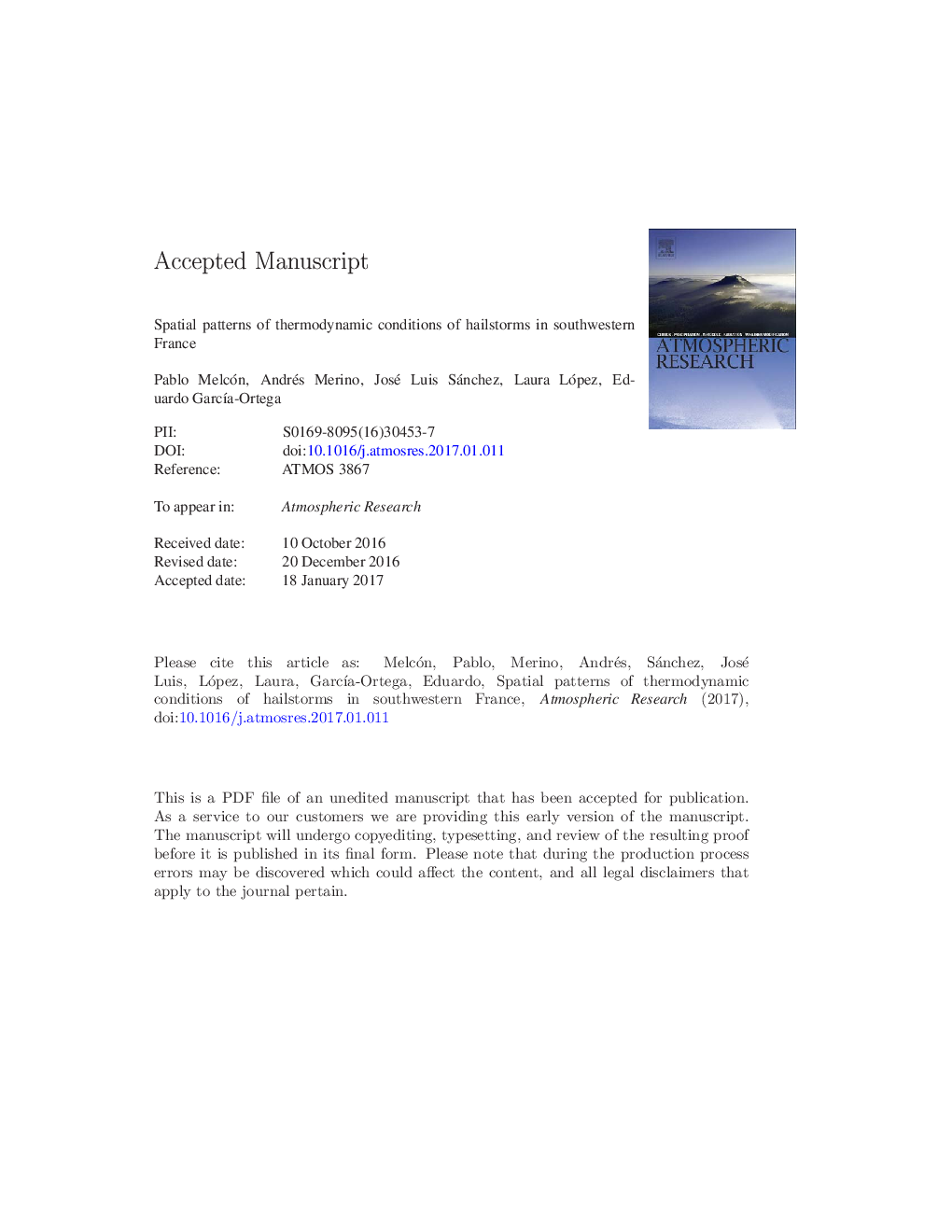| Article ID | Journal | Published Year | Pages | File Type |
|---|---|---|---|---|
| 5753679 | Atmospheric Research | 2017 | 54 Pages |
Abstract
Southwestern France is one of the European regions with higher frequency of hail and substantial losses. The Association Nationale d'Etude et de Lutte contre les Fleáux Atmosphériques (ANELFA) maintains a hailpad network there in continuous operation, creating an extensive database for the study of hail. We aimed to create a new forecast tool to improve hailfall detection and determine its spatiotemporal distribution in the region. Using a database of 92 hail days between 2001 and 2010, we obtained vertical profiles of temperature, dew point temperature, and relative humidity from WRF model simulation. After validating these by comparison with radiosonde profiles from Bordeaux at 1200 UTC, 31 stability indexes were obtained for a point representative of the entire study area. These indexes were introduced in a binary logistic regression model, which selected the most accurate ones for detecting hail days in the region, namely, the Showalter index, dew point temperature at 850Â hPa, and TQ index. A logistic equation to distinguish between hail and hail-free days was constructed by combining these indexes. Results show a probability of detection (POD) of 87%, false alarm ratio (FAR) of 16.7%, and a Heidke Skill Score (HSS) of 0.696. The logistic equation was then applied to the entire study zone, and the results were introduced in a cluster analysis. Four clusters of hail days were obtained according to the spatial patterns of atmospheric thermodynamic conditions and probability of hail. The average distribution of hail for each cluster shows a strong similarity with the distribution of impacted hailpads from the ANELFA network. The average synoptic environment, monthly distribution and hail characteristics at the surface were also analyzed for each cluster. Cluster 1 (August) was the least frequent, with small and weak hailfalls. Cluster 2 (June and July) and 3 (May and September) had the most intense hail events, while cluster 3 and 4 (May) had the most extensive areas affected. The new forecast tool shows satisfactory results and complements other studies in the same region, and it can be a useful tool for operational forecasters in predicting hail days and determining the spatial distribution of hailfalls.
Related Topics
Physical Sciences and Engineering
Earth and Planetary Sciences
Atmospheric Science
Authors
Pablo Melcón, Andrés Merino, José Luis Sánchez, Laura López, Eduardo GarcÃa-Ortega,
